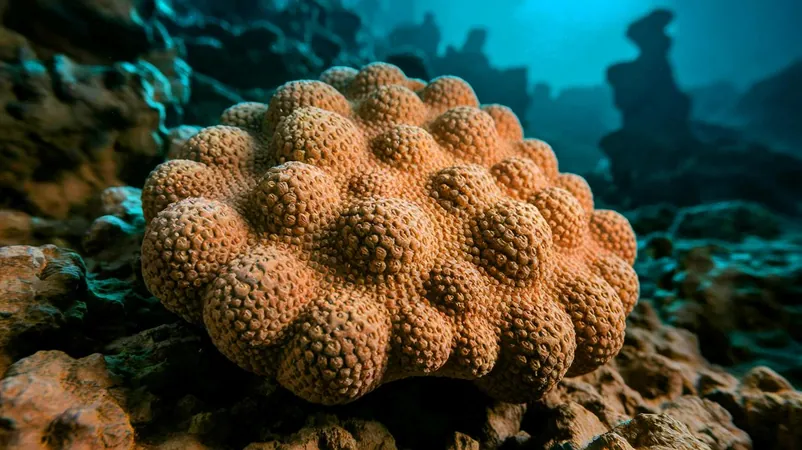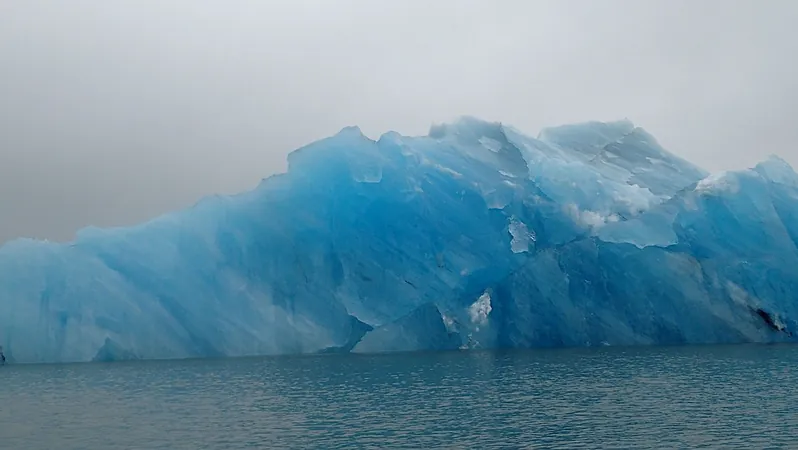
Earth's Oldest Underwater Fortress
2025-04-04
Author: Rajesh
Discover the 480-Million-Year-Old Sponge that Redefined Reef History in China!
Prepare to be amazed by a sensational discovery that is shaking the foundations of paleontology! Scientists have uncovered an extraordinary 480-million-year-old sponge in South China, and its implications for understanding the early development of reef ecosystems are monumental. This ancient creature, named Lophiostroma leizunia, isn’t just another fossil; it’s a game-changer that has pushed back the timeline for the emergence of skeletal reefs by a staggering 20 million years.
Unlocking the Past: Lophiostroma leizunia
The discovery of Lophiostroma leizunia marks a pivotal advancement in our knowledge of marine life. Classified as the oldest Stromatoporoid sponge ever found, its presence during the Paleozoic era—when the first complex animals roamed the planet—sheds new light on the evolution of reef ecosystems. Research published in the journal Proceedings of the National Academy of Sciences (PNAS) highlights how this sponge’s existence expands our view of ancient marine biodiversity.
What makes Lophiostroma leizunia particularly fascinating is its unique skeletal structure, which utilizes fluorapatite—a mineral previously unrecognized in sponges. This groundbreaking finding reveals that these early organisms were capable of utilizing various biominerals, including silica, calcium carbonate, and calcium phosphate, showcasing an impressive genetic repertoire for constructing their complex skeletons.
A Closer Look at Earth’s Ancient Biodiversity
The sediment-rich region of South China has long been considered a goldmine for those studying the Early Paleozoic marine life, and this latest discovery grants us fresh insights into a transformative period known as the Great Ordovician Biodiversification Event (GOBE). This era was marked by a surge in marine species diversity and the emergence of intricate skeletal reefs.
Lophiostroma leizunia provides crucial evidence that suggests these reefs developed much earlier than previously believed. This discovery opens up new horizons for scientists researching the intricate evolutionary processes that shaped marine ecosystems. The interplay of environmental factors and genetic innovation during this period has far-reaching implications for understanding how life forms adapted and thrived.
Going Beyond Skeletons: The Role of Adaptation
The study surrounding Lophiostroma leizunia highlights a remarkable aspect of early animal evolution—the diversity in biomineralization strategies. The phosphate-based skeleton exemplifies how early life forms were innovative in their construction techniques, enabling a variety of structural adaptations that undoubtedly contributed to the success and proliferation of marine species in the Paleozoic seas.
This revelation challenges long-standing assumptions regarding the sequence of reef development and suggests that early evolutionary pathways were more complex and ambitious than previously thought. It emphasizes the critical role that genetic adaptation and innovation played in shaping not just individual species, but entire ecological systems.
A Call to Action: Preserving Our Planet's History
The implications of the discovery of Lophiostroma leizunia extend beyond academic interest—it highlights the urgent need to conserve fossil-rich sites around the globe. As scientists continue to uncover Earth's paleontological treasures, we are reminded that every find contributes to a larger narrative of life on our planet.
Recognizing the importance of ancient organisms and their ecological roles can help guide current conservation efforts, ensuring that we preserve the history embedded in these geological records.
As we navigate the mysteries of ancient marine ecosystems, the findings surrounding Lophiostroma leizunia are a remarkable testament to the depth of scientific inquiry and exploration. What additional secrets might still lie undiscovered beneath the Earth’s surface, waiting to redefine our understanding of life’s rich history?
Stay tuned—this is just the beginning of a thrilling journey into the ancient seas!



 Brasil (PT)
Brasil (PT)
 Canada (EN)
Canada (EN)
 Chile (ES)
Chile (ES)
 Česko (CS)
Česko (CS)
 대한민국 (KO)
대한민국 (KO)
 España (ES)
España (ES)
 France (FR)
France (FR)
 Hong Kong (EN)
Hong Kong (EN)
 Italia (IT)
Italia (IT)
 日本 (JA)
日本 (JA)
 Magyarország (HU)
Magyarország (HU)
 Norge (NO)
Norge (NO)
 Polska (PL)
Polska (PL)
 Schweiz (DE)
Schweiz (DE)
 Singapore (EN)
Singapore (EN)
 Sverige (SV)
Sverige (SV)
 Suomi (FI)
Suomi (FI)
 Türkiye (TR)
Türkiye (TR)
 الإمارات العربية المتحدة (AR)
الإمارات العربية المتحدة (AR)